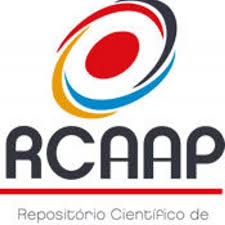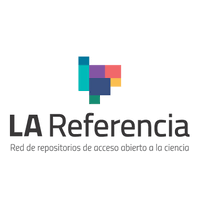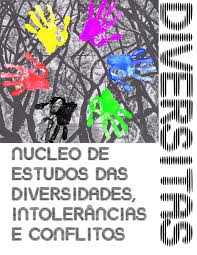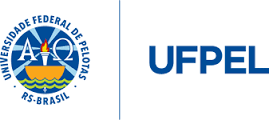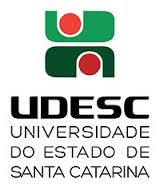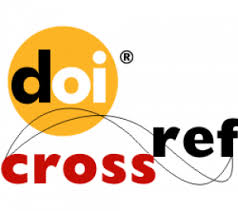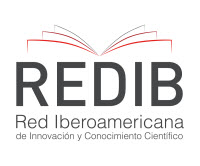As pesquisas canadenses e brasileiras sobre produção de L2 e a Hipótese da Produção: em busca de uma base psicolinguística para o uso da tradução na aprendizagem de L2
Resumo
Palavras-chave
Referências
ARMENTANO, A. L. T. A. (2006) tarefa “digtogloss”: aspectos cognitivos e interacionais. Dissertação (mestrado) – Universidade Estadual de Campinas, Instituto de Estudos da Linguagem, Campinas, SP.
BALBONI, P. E (2014). A tradução no ensino de línguas: história de uma difamação. Revista In-traduções, ed. 4. Trad. Maria Teresa Arrigoni. Rev. Noêmia Soares e Sérgio Romanelli. Universidade Federal de Santa Catarina, Florianópolis, 2011. Disponível em: Acesso em: 10 out. 2014.
BRANCO, S. O. (2009). Teorias da tradução e o ensino de língua estrangeira. Horizontes de Linguística Aplicada, v. 8, n. 2, p. 185-199
BYGATE, M.; SKEHAN, P.; SWAIN, M. (2001). (Org.) Researching pedagogic tasks: second language, teaching, and testing. Harlow, England: Pearson.
CANALE, M.; SWAIN, M. (1980). Theoretical bases of communicative approaches to Second Language Teaching and Testing. Applied Linguistics, 1.
CANALE, M. (1983). From communicative competence to communicative language pedagogy. In: RICHARDS, J. C.; SCHMIDT, R. W. (Ed.) Language and communication. London-New York, Longman.
D’ELY, R. C. S. F. (2006). A Focus on learners’ metacognitive processes: the impact of strategic planning, repletion, strategic planning plus repetition, and strategic planning for repetition on L2 oral performance. Tese (Doutorado), Universidade Federal de Santa Catarina, Florianópolis.
D’ELY, R. C. S. F, GUARÁ-TAVARES, M. G. (2018). Translation tasks, collaborative pre- task planning for repetition and L2 speech performance. Revista da Anpoll, v. 1, nº 44, p. 346-360, Florianópolis.
ELLIS, R. (2003). Task-Based language learning and teaching. Oxford: Oxford University Press.
Ellis, R., & Barkhuizen, G. (2005). Analyzing learner language. Oxford, England: Oxford University Press.
ESCOLAR, P. O. (2011). El papel de la traducción en el proceso de enseñanza/aprendizaje de una lengua extranjera. In: ENCINAS, Calvo et al. La Traductología actual: nuevas vías de investigación en la disciplina. Granada: Comares, cap. 5, p. 77-83.
FOSTER, P.; SKEHAN, P. (1996). The influence of planning and task type on second language performance. Studies in Second Language Acquisition, v. 18, n. 3.
GUARÁ-TAVARES, M. G. (2009). The relationship among pre-task planning, working memory capacity and L2 speech performance: a pilot study. Linguagem & Ensino (UCPel), v. 12, p. 165-194.
GUARÁ-TAVARES, M. G. (2007). The Output Hypothesis, the L2 teacher and the speaking skill. The ESPecialist, vol. 28 (2), p. 185-210.
GUARÁ-TAVARES, M. G. (2016). Learners’ processes during pre-task planning and working memories capacity. Ilha do Desterro (UFSC), v. 69, p. 79-94.
IZUMI, S.; Bigelow (2000). Does output promote noticing and second language acquisition? TESOL Quarterly Vol. 34, No. 2 (Summer, 2000), pp. 239-278.
IZUMI, S. (2003) Comprehension and production processes in second language learning: in search of the pyscholinguistic rationale of the Output Hypothesis. Applied Linguistics, 24/2, p. 168-196.
JAKOBSON, R. (2000). On linguistic aspects of translation. In: VENUTI, Lawrence (Ed.) The Translation Studies Reader. London: Routledge, p. 113-118.
KRASHEN, S. D. (1982). Principles and practice in second language acquisition. Pergamon Press Inc. Universidade da Carolina do Sul.
LACERDA, A. G. (2009). O diálogo colaborativo como facilitador da aprendizagem dos alunos de nível básico de inglês como língua estrangeira. Dissertação, Instituto de Letras da Universidade Federal Fluminense, Rio de Janeiro.
LEFFA, V. (2012). Ensino de línguas: passado, presente e futuro. Rev. Est. Ling., Belo Horizonte, v.20, n.2, p. 389 – 411, jul./dez.
LIER, L. (1995). The use of L1 in L2 classes. Published in Babylonia (Switzerland).
MACHIDA, S. (2011). Translation in teaching a foreign (second) language: A methodological perspective. Journal of Language Teaching and Research, v. 2, n. 4.
RICHARDS, J. C.; RODGERS, T. S. (1999). Approaches and Methods in Language Teaching. Cambridge University Press.
SALES, A. J. (2016). Tarefas de tradução e ensino de L2: uma investigação dos processos cognitivos pelo viés da Hipótese da Produção. Dissertação de mestrado não publicada. Universidade Federal do Ceará, Fortaleza.
SANGARUN, J. (2005). The effects of focusing on meaning and form in strategic planning. In R. Ellis (Ed.), Planning and task performance in a second language. Amsterdam and Philadelphia: John Benjamins.
SANTORO, E. (2011). Tradução e ensino de línguas estrangeiras: confluências. Cadernos de Tradução, v. 1, n. 27.
SCHMIDT, R. (1990). The Role of Consciousness in Second Language Learning. Applied Linguistics, 11, 129-158.
SCNEIDER, C. I.; BEZERRA, M. G. (2011). A tradução como ferramenta de ensino-aprendizagem de língua estrangeira espanhol. Cultura & Tradução, João Pessoa, v.1, n.1.
SEBA, R. G. (2008). From collaborative writing to reading comprehension: a case study on focus on form through collaborative dialogue as a means to enhance reading comprehension in English. Dissertação, Univ. Federal Fluminense, Rio de Janeiro.
SHEHADEH, Ali. (2002).Comprehensible output, from occurrence to acquisition: An Agenda for Acquisitional Research. Language Learning, v. 52, n. 3, p. 597-647.
SKEHAN, P. (1996). A framework for the implementation of task based instruction. Applied Linguistics, Vol 17, No 1 C Oxford University Press.
SKEHAN, P. (1998). A cognitive approach to language learning. Oxford: Oxford University Press.
SWAIN, M. (1985). Communicative competence: some roles of comprehensible input and comprehensible output in its development: In: GASS, S. M.; MADDEN, C. (ed.). Input in Second Language Acquisition. Roley, MA: Newsbury House, p. 235-253,.
______. (1995). Three functions of output in second language learning. In: COOK, G.; SEIDLHOFER (Org). Principles and practice in Applied Linguistics. Oxford University Press, p. 125-144.
______. (2000) The Output Hypothesis and beyond: mediating acquisition through collaborative dialogue. In: LANTOLF, J.P. (ed). Sociocultural theory and second language learning. Oxford: Oxford University Press, p. 97-114.
______. (2001). Integrating language and content teaching through collaborative tasks. The Canadian Modern Language Review, v. 58, p. 44-63.
SWAIN, M.; LAPKIN, S. (1995). Problems in output and the cognitive processes they generate: a step towards second language learning. Applied Linguistics, v. 16, p. 371-391.
¬¬¬¬TERRA, M. R. (2004). Língua Materna (LM): um recurso mediacional importante na sala de aula de aprendizagem de língua estrangeira (LE). Trabalhos de Linguística Aplicada, Campinas, (43): 97-113, Jan./June.
TUDOR, I. (1987). Guidelines for the communicative use of translation. System, 15 (3); 365-371.
VANPATTEN, B. (1990). Attending to Form and Content in the Input. Studies in Second Language Acquisition, 12(3), 287-301.
VANPATTEN, B. (1996). Input processing and grammar instruction: Theory and research, Norwood, NJ:ABLEX.
Apontamentos
- Não há apontamentos.
ISSN eletrônico: 1984-5677
ISSN impresso: 1519-0994






